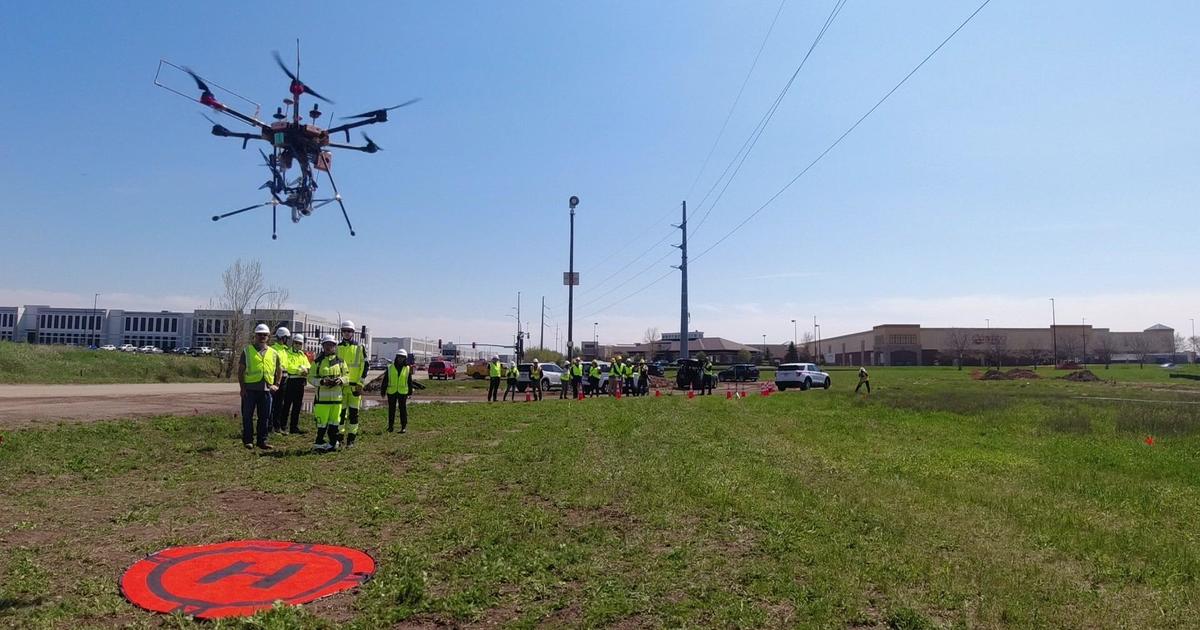Mpls. Business Helps Prepare You, Your Bike For Winter Cycling
MINNEAPOLIS (WCCO) – When the snow starts to fall and the temperatures dip many decide to retire their bicycles for the year. But not so fast!
Winter cycling has become a favorite way for many Minnesotans to enjoy the outdoors during the cold months.
"Just got to dress appropriately," Brian Nelson, a winter cyclist, said. "Usually my toes get the coldest, after about 45 minutes of riding they get the coldest."
Freewheel Midtown Bike Center in Minneapolis is getting Minnesotans geared up, starting with their ride.
Whether you have a mountain or a road bike or not, studded tires are essential to give riders traction on slippery roads.
"You want to lower your air pressure so these studs actually make contact with ice. If it's up too high, you're not going grip, you're not going to make contact and you might slide," Natalia Mendez, manager of Freewheel Bike, said
Studded tires can run $50 to $100 a piece. Fat tires cost more, but allow riders to plow over anything. A fat-tire bike runs around $1,000.
"They're a lot of fun to ride," Joe Reeves, a Freewheel Bike employee, said. "You get that much more cushion, so it doesn't matter what you ride over. You can ride into curbs, roots, rocks, whatever! Just go for it."
Fenders are also handy to keep you dry.
"Especially when it gets up to 20 to 30 degrees and you get wet, sloppy roads, it helps keep you dry and keep your clothes dry. Even the front fender helps a lot. That helps keep your feet dry," Reeves said.
To stay dry, well-designed clothing can go a long way.
Winter cycling boots have an outside heavy-duty shell protecting from wind and water and an insulated inner boot.
"It has to be really cold for me to start put these on because they are so warm," Mendez said. "The nice thing, too, is that they have really excellent grippy soles and you can clip into a cycling shoe with these. There are cleats on the bottom."
The boots cost around $325. Or, beginners can also get by wearing snow boots and warm socks.
Specialty bike pants come with a wind shell in the front and breathable material in the back. But to start out, Mendez says ski or snow pants will keep you warm too. You can also wear your ski helmet which is similar to winter cycling helmets.
"They've got these great sliding vents, you can close these off if you're getting cold," Mendez said. "A lot of people in Minnesota who have their skiing sports, you can cross over a lot of your items as you're getting into it to make it more cost effective."
To keep your fingers warm, $125 poagies are worth the investment.
"They are wind proof over the top with insulation inside. So, they allow you to still manipulate brakes levers, you can shift gears, but then you have quite a bit of insulation so you don't have to wear quite as big of a glove," Mendez said.
And just like any battery, the cold can zap the life from your lights which are essential during the dark winter months.
Mendez recommends lights you can recharge using a USB port.
"When you get to work charge them before you leave and then you'll be safe even if you have a longer ride home," she said.
Maintenance is also important. Make sure to keep your chain lubed to prevent rust and also give your bike a bath. Just like your car, salt and grit can wreak havoc on the gears and frame.
If you'd like to try winter cyclist for a fraction of the cost, Freewheel Bike is one of several bike shops that rents winterized bikes.
A mountain bike with studded tires is $35 for the day. A fat-tire bike is $55 a day.
If you decide to buy one, the rental fee is taken off of the total purchase.



